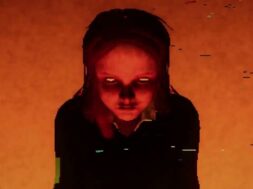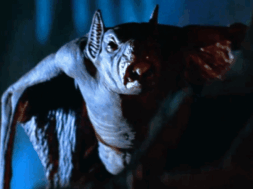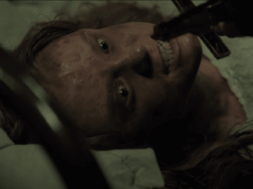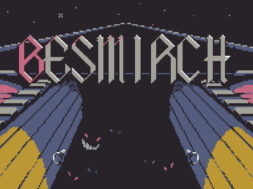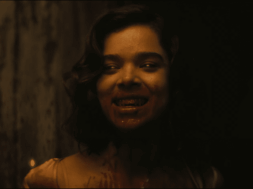
Kiyoshi Kurosawa‘s most recent film, Before We Vanish, was released here in the states only a few days ago and has been garnering rave reviews. Of course, a positive reception is something the 62-year-old director should be accustomed to by now. Many horror fans regard 2001’s Pulse as a bonafide J-horror classic. However, things weren’t always so rosy for the filmmaker. In fact, there’s one film on his resume that he’d prefer you forgot, and quite frankly – most have. To double down on the timely nature of this specific topic, we also recently celebrated the 20th anniversary of one of the most groundbreaking games ever, Resident Evil 2, and are still fervently speculating on its potential remake. Just what in the hell do a highly acclaimed Japanese filmmaker and a twenty-two-year-old survival horror franchise have in common? Quite a lot, it turns out.
Sweet Home – The Film
Kiyoshi Kurosawa was still an upcoming name in the film biz with only a handful of credits to his name when he penned the script for Sweet Home (AKA Sûîto Homu). It was a haunted house tale, steeped in its own creative mythology with plenty of opportunity to insert crowd-pleasing frights. It was shepherded into production by actor/director Juzo Itami who’d acted for Kurosawa several years earlier in the musical/sex/comedy The Excitement of the Do-Re-Mi-Fa Girl. Itami came on board as producer, ensuring a role for his wife, Nobuko Miyamoto. The film even scored distribution through Godzilla production house, Toho.
The plot is reminiscent of a number of spookhouse classics. There are shades of The Haunting and the more relevant for its time, Poltergeist. A film crew decides to crash an old, rickety mansion with a terrible history (always a regrettable decision). The house once belonged to Ichirō Mamiya, a famously tortured artist. Their hopes are of discovering long-lost fresco’s painted throughout the cavernous estate and recording it all for a potential documentary to boot. The cast is made up of the lovable oaf director, Kazuo, with not so hidden feelings for his lovely producer, Akiko, who helps him take care of his teenage daughter, Emi. The rest of the crew are mostly canon fodder for the evil spirits lurking within the walls. The film works exceptionally well at allowing time for the audience to bond with our core trio without ever feeling like the pace is dragging.
Once the shit does hit the fan, the story falls into your standard haunted house groove. Someone gets possessed by the long-suffering spirit of Mamiya’s wife, mournful of the son who died too young in a tragic accident, and a [literal] dark force seeks to claim the lives of those trapped inside. The story is much less important than the stylish, colorful set-pieces and effects that begin to unfurl scene after scene. Despite the goofy tone of the first half, things get decidedly grim as the film charges towards the climax.
It’s a damn-near injustice that Sweet Home has turned out to be so obscure. It’s quite the entertaining thrill-ride that would excite fans of large-scale 80’s horror. Far removed from the quiet creeping dread of Kurosawa’s later horror efforts, Sweet Home is an unabashedly fun, often comedic, effects riddled haunter. Even gorehounds can get a kick out of this one. Bodies are melted, axes are lodged into skulls, dismembered torsos manage to crawl on their own. The pièce de résistance, however, is a climactic battle with a towering animatronic-puppet demon that is truly awe-inspiring for its sheer presence on screen. This should come as no surprise, though, as effect master Dick Smith was flown to Japan to handle the brunt of the effect work.
So, why is Sweet Home so barely seen or talked about? Ultimately, it was never released outside Japan, and except for a rare AF laserdisc, the film lived and died on VHS. Even worse, producer Itami was apparently displeased with some of the creative choices Kurosawa made with the film. After the initial theatrical run, Itami shot new scenes and recut it in order to make it even more mainstream. That version is the only cut that exists today. Kurosawa’s cut never saw any type of release on home video. It reportedly still exists, locked away in a Toho vault…just waiting for someone like Scream Factory to go dig up. Just sayin’. Kurosawa has publicly disowned the film in its current state, and who knows if we’ll ever get the chance to see theatrical version again.
Sweet Home – The Video Game
Oh, yeah, this has something to do with Resident Evil too, right? Yep! Sure does. In a fairly genius marketing move, the film was released in tandem with a Famicom (the Japanese Nintendo) video game of the same name. In fact, the film and the movie were advertised together as well, which caused confusion as to exactly which came first. It seems the film was the chicken before the game’s egg…or the other way around. Whichever. Released by Capcom, the game was directed by video game designer Tokuro Fujiwara. Fujiwara was coming off the horror arcade hit Ghosts n’ Goblins and was given extreme creative freedom from Kurosawa who wasn’t concerned with him strictly adhering to the film’s plot.
Ultimately, much of Sweet Home the game remains the same in story. It’s a top-down RPG (think original Zelda) where five filmmakers get trapped in a ghost, zombie, haunted stuff mansion and have to collect items and solve puzzles to survive. What was groundbreaking about the gameplay was the necessity to play as each character in order to solve a puzzle specific to that character’s unique skill. Once someone dies in the game, they’re out for good! Every choice you made would culminate in one of several different endings. The game, much like the film, was never released on US soil. Many believed Nintendo held off on a US version due to the transitions and numerous cut-scenes that greeted the death of a character; they were far too graphic for American audiences at the time.
Despite the limited availability, Fujiwara was confident that horror would become as bankable for gaming as it was for the film industry. Years later, in 1993, a remake of Sweet Home began development at Capcom with Fujiwara acting as producer. In an interview with GlitterBerri, he stated his intention with mounting the remake:
“The basic premise was that I’d be able to do the things that I wasn’t able to include in Sweet Home. It was mainly on the graphics front that my frustration had been building up. I was also confident that horror games could become a genre in themselves.”
The game went onto be directed by Shinji Mikami. It was retitled Resident Evil and one of the longest-running, most successful horror franchises was born. The two games share a number of marked similarities from multiple playable characters, different decisions dictating various endings, limited inventory management, and the use of haunting notes to drive the narrative forward. Without Sweet Home, there would be no Resident Evil.
To this day, there is still no American release of the film, and until some wonderful Blu-ray company gets their mitts on it, we thankfully at least have janky VHS rips floating around the YouTubes. As far as the game goes, indie developer Gaijan created an English mod that anyone can play if they so choose.

